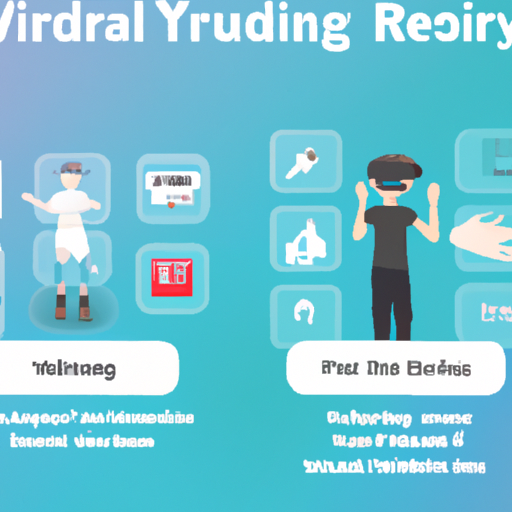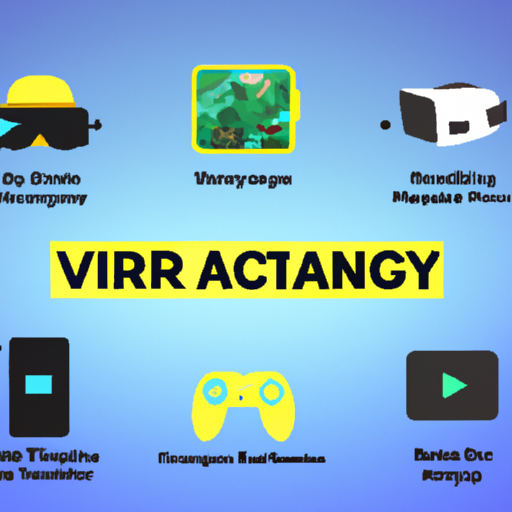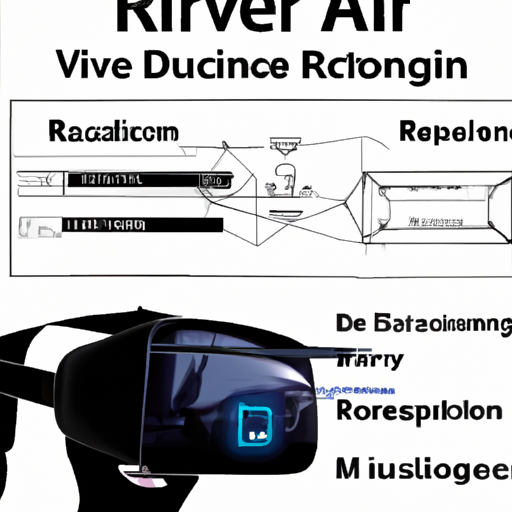-
Table of Contents
- Introduction
- The Role of VR/AR in the Automotive Industry: How Virtual and Augmented Reality are Transforming the Way We Drive
- The Business of VR/AR: How Companies are Leveraging Virtual and Augmented Reality to Enhance Their Products and Services
- The Future of Gaming: How Virtual and Augmented Reality are Changing the Way We Play
- The Impact of VR/AR on Healthcare: How Virtual and Augmented Reality are Revolutionizing Patient Care
- Exploring the Benefits of VR/AR in Education: How Virtual Reality and Augmented Reality are Transforming the Classroom
- Conclusion
“Unlock the Possibilities of VR/AR: Transform Your Industry Today!”
Introduction
Virtual Reality (VR) and Augmented Reality (AR) are rapidly becoming the go-to technologies for a variety of industries. From gaming to education to healthcare, these technologies are revolutionizing the way we interact with the world around us. VR and AR applications are being used to create immersive experiences, provide interactive learning opportunities, and even improve patient care. With the potential to revolutionize the way we interact with the world, VR and AR applications are quickly becoming the norm in many industries.
The Role of VR/AR in the Automotive Industry: How Virtual and Augmented Reality are Transforming the Way We Drive
The automotive industry is undergoing a major transformation, with virtual and augmented reality (VR/AR) playing a key role in the process. VR/AR technology is revolutionizing the way we drive, from the design and engineering of vehicles to the way we interact with them.
VR/AR technology is being used to create virtual showrooms, allowing customers to explore and customize their vehicles without ever having to step foot in a dealership. This technology is also being used to create virtual test drives, allowing customers to experience a car’s performance and features without ever having to leave their homes.
VR/AR technology is also being used to create virtual simulations of driving scenarios, allowing drivers to practice and hone their skills in a safe and controlled environment. This technology is being used to create virtual driving schools, allowing drivers to learn the basics of driving without ever having to get behind the wheel.
In addition, VR/AR technology is being used to create virtual maintenance and repair scenarios, allowing mechanics to diagnose and repair vehicles without ever having to open the hood. This technology is also being used to create virtual training scenarios, allowing mechanics to practice and hone their skills in a safe and controlled environment.
Finally, VR/AR technology is being used to create virtual reality experiences, allowing drivers to explore and experience the world around them in a completely immersive way. This technology is being used to create virtual tours of cities, allowing drivers to explore and experience the sights and sounds of a city without ever having to leave their homes.
The automotive industry is undergoing a major transformation, and VR/AR technology is playing a key role in the process. This technology is revolutionizing the way we drive, from the design and engineering of vehicles to the way we interact with them. VR/AR technology is allowing us to explore and experience the world around us in a completely immersive way, and it is transforming the way we drive.
The Business of VR/AR: How Companies are Leveraging Virtual and Augmented Reality to Enhance Their Products and Services
Virtual and Augmented Reality (VR/AR) are rapidly becoming a major part of the business world. Companies are leveraging these technologies to enhance their products and services, creating new opportunities for growth and innovation.
VR/AR technologies allow businesses to create immersive experiences for their customers. For example, retailers can use VR to give customers a virtual tour of their store, allowing them to explore products and services without ever leaving their home. Similarly, AR can be used to provide customers with an interactive experience, such as overlaying product information on top of a physical product.
Businesses are also using VR/AR to improve their internal operations. For example, companies can use VR to train employees in a safe, simulated environment. This can help reduce costs associated with training and minimize the risk of injury. Additionally, AR can be used to provide employees with real-time information and instructions, allowing them to work more efficiently.
Finally, businesses are using VR/AR to create new products and services. For example, companies can use VR to create virtual events, such as concerts or conferences, that can be experienced from anywhere in the world. Similarly, AR can be used to create interactive experiences, such as games or educational tools.
In short, businesses are leveraging VR/AR to enhance their products and services, create new opportunities for growth and innovation, and improve their internal operations. As these technologies continue to evolve, businesses will be able to take advantage of even more opportunities to stay ahead of the competition.
The Future of Gaming: How Virtual and Augmented Reality are Changing the Way We Play
The gaming industry is rapidly evolving, and virtual and augmented reality (VR and AR) are two of the most exciting new technologies that are changing the way we play. VR and AR are both immersive technologies that allow users to interact with virtual environments in a way that is more realistic than ever before.
VR is a fully immersive experience that transports users into a completely virtual world. This technology is used in a variety of gaming applications, from first-person shooters to puzzle games. With VR, users can explore virtual worlds, interact with objects, and even play against other players in a virtual environment.
AR, on the other hand, is a technology that overlays virtual elements onto the real world. This technology is used in a variety of gaming applications, from augmented reality sports games to augmented reality puzzle games. With AR, users can interact with virtual elements in the real world, such as playing a game of virtual tennis on a real court or solving a virtual puzzle in a real room.
Both VR and AR are revolutionizing the gaming industry, and they are being used in a variety of ways. For example, VR and AR are being used to create more immersive and realistic gaming experiences. They are also being used to create new types of games, such as virtual reality escape rooms and augmented reality scavenger hunts.
In addition, VR and AR are being used to create more social gaming experiences. For example, VR and AR can be used to create virtual worlds where players can interact with each other in a more realistic way. This technology can also be used to create virtual tournaments and leagues, allowing players to compete against each other in a more immersive environment.
Finally, VR and AR are being used to create more educational gaming experiences. For example, VR and AR can be used to create virtual classrooms, allowing students to learn in a more immersive environment. This technology can also be used to create virtual museums, allowing visitors to explore and learn about history in a more interactive way.
Overall, VR and AR are revolutionizing the gaming industry and changing the way we play. These technologies are creating more immersive and realistic gaming experiences, as well as new types of games and social gaming experiences. They are also being used to create more educational gaming experiences, allowing users to learn in a more interactive way. As these technologies continue to evolve, the future of gaming looks brighter than ever.
The Impact of VR/AR on Healthcare: How Virtual and Augmented Reality are Revolutionizing Patient Care
Virtual reality (VR) and augmented reality (AR) are revolutionizing the healthcare industry, providing innovative solutions to improve patient care. By utilizing these technologies, healthcare providers are able to provide more accurate diagnoses, reduce costs, and improve patient outcomes.
VR and AR are being used in a variety of ways in the healthcare industry. For example, VR can be used to simulate medical procedures, allowing medical students to practice and hone their skills in a safe and controlled environment. AR can be used to provide real-time information to medical professionals, such as patient records, medical images, and drug information.
VR and AR can also be used to improve patient care. For example, VR can be used to provide immersive experiences to patients, such as virtual tours of medical facilities or virtual reality therapy for those suffering from mental health issues. AR can be used to provide real-time information to patients, such as medical images or drug information.
In addition, VR and AR can be used to improve the accuracy of diagnoses. For example, AR can be used to provide real-time information to medical professionals, such as medical images or drug information. This can help medical professionals make more accurate diagnoses and provide better patient care.
Finally, VR and AR can be used to reduce costs. For example, VR can be used to simulate medical procedures, allowing medical students to practice and hone their skills in a safe and controlled environment. This can reduce the need for expensive medical equipment and reduce the cost of medical training.
Overall, VR and AR are revolutionizing the healthcare industry, providing innovative solutions to improve patient care. By utilizing these technologies, healthcare providers are able to provide more accurate diagnoses, reduce costs, and improve patient outcomes.
Exploring the Benefits of VR/AR in Education: How Virtual Reality and Augmented Reality are Transforming the Classroom
The use of virtual reality (VR) and augmented reality (AR) in education is rapidly gaining traction as a powerful tool for teaching and learning. By immersing students in a virtual environment, VR and AR can provide an engaging and interactive learning experience that can help students better understand complex concepts and develop critical thinking skills. In addition, these technologies can be used to create a more personalized learning experience, allowing students to explore topics at their own pace and in their own way.
VR and AR can be used to create immersive learning experiences that allow students to explore and interact with virtual objects and environments. For example, students can use VR to explore a virtual museum, or to take a virtual field trip to a distant location. AR can be used to overlay virtual objects onto the real world, allowing students to interact with them in a more tangible way. For example, students can use AR to explore the anatomy of a human body, or to explore the solar system.
VR and AR can also be used to create a more personalized learning experience. For example, students can use VR to explore a virtual world that is tailored to their individual learning needs. This can help students better understand complex concepts and develop critical thinking skills. In addition, VR and AR can be used to create interactive learning experiences that allow students to explore topics at their own pace and in their own way.
Finally, VR and AR can be used to create a more engaging learning experience. By immersing students in a virtual environment, these technologies can help to keep students engaged and motivated. In addition, VR and AR can be used to create interactive learning experiences that can help to foster collaboration and communication between students.
In conclusion, VR and AR are powerful tools for teaching and learning that can help to create a more engaging and personalized learning experience. By immersing students in a virtual environment, these technologies can help students better understand complex concepts and develop critical thinking skills. In addition, VR and AR can be used to create interactive learning experiences that allow students to explore topics at their own pace and in their own way. As such, the use of VR and AR in education is rapidly gaining traction as a powerful tool for teaching and learning.
Conclusion
In conclusion, VR/AR applications have the potential to revolutionize many industries, from gaming to healthcare. They offer a unique way to interact with the world around us, allowing us to experience things in a more immersive and engaging way. With the right implementation, these technologies can be used to create more efficient and effective solutions for a variety of industries. As the technology continues to evolve, we can expect to see more innovative applications of VR/AR in the future.




